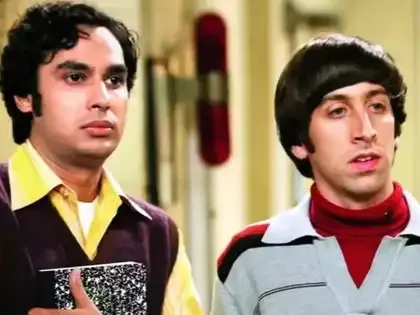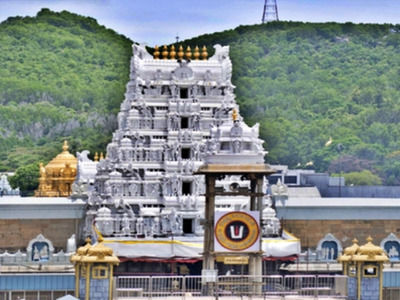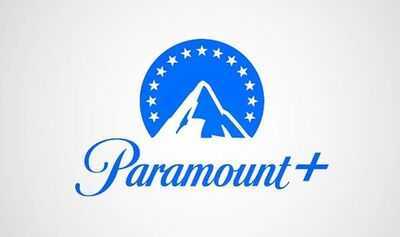If the invisible hand were to reveal itself, constantly interfering with self-interest, would it still be committed to creating a level and efficient playing field? This is the question that has assailed the world while dealing with the Trump regime's circus of threats, sanctions, duties and demands in the last 8 months, as he looks to enact, mostly without success, his election promises of resolving conflict, reducing national debt, restricting immigration and reshoring jobs.
Unsurprisingly, his latest move to slap a $100,000 fee on H-1B visa applications - capped at 85,000 work visas a year, including 20,000 for workers with advanced degrees - after Sept 21, has led to much confusion, anxiety and indignation. This consternation has been further compounded by US commerce secretary Howard Lutnick's warning to firms to 'Train Americans. Stop bringing in people to take our jobs. Either the person is very valuable to the company and America, or they are going to depart, and the company is going to hire an American.'
But this pronouncement - not unlike his earlier ramblings about the future of work in which highly-paid human employees would assist robots to achieve maximum efficiency - suffers from a lack of fact and credibility. Even if this move forced US firms to pursue local talent, there are not enough skilled and willing individuals to fill a void that will be created by departing foreign talent.
In fact, the industry that will likely be most affected is US higher education - on which there is no H-1B cap akin to that on corporations - which depends on both foreign students, who see a US degree in higher education as a pathway to securing an H-1B visa, and foreign faculty to shore up its STEM credentials. This is especially critical at a time when the Trump regime has cut funding and grants and suspended many future programmes to support STEM education.
In any case, with regard to the immediate impact on H-1B visa holders, White House press secretary Karoline Leavitt clarified that this fee is a one-time charge for new H-1B visa petitions that enter the next visa lottery cycle after Sept 21. This means that Indians, who make up more than 70% of successful H-1B applicants every year, will not need to 'depart' any time soon because their current employer cannot afford to pay the new charges.
Nevertheless, it is easy to view this as a new tariff that seems like a blow to Indian service exports to the US, the value of which stands at about $149 bn.
But the truth probably lies elsewhere. While Indians make up the bulk of H-1B visa beneficiaries, it is US companies that hire most of them. Only TCS features as a top 12 firm (collectively accounting for 50% of all foreign hires) with a mere 6% share. As such, if US firms need to pick up these fees, a fixed annual outgo for the industry will hardly make a dent to their finances as long as it's justified by the promise of continuously expanding returns.
Nowhere was this willingness more apparent than at a televised dinner earlier this month, hosted by Trump in which founders and CEOs of Meta, Apple, Google, Microsoft, OpenAI, AMD, Oracle and other AI champions swore verbal fealty and promised investment concessions. Sundar Pichai, Satya Nadella, Sam Altman, Tim Cook and Mark Zuckerberg collectively committed to investing nearly $1.5 tn to 'make America great again'.
Surely, the protestations and pledges did not imply that these CEOs merely took pleasure in the act of sycophantically paying for the privilege of doing to another what that other always prefers others to do unto him? Instead, some of their phrases - 'protecting our interests', 'market access overseas', 'winning the AI race' - which resonated with Lutnick's injunction to hire only the 'top, top people' to succeed, seemed like the old and familiar act of a state colluding with its industrial actors to maintain supremacy.
To win key concessions - light-touch regulation, indemnification against copyright infringement, protection against crippling penalties and ex ante regulation abroad, and erection of barriers to foreign competition, while attracting and exploiting the best knowledge workers from India and elsewhere - US technocrats may be willing to spend a considerable sum, including $7-8 bn annually on account of valuable foreign work visas, and ignore the short-term loss in profitability.
Nothing in the current proposal may adversely affect the long-term business outlook of India's IT firms not already being challenged by AI, except supernumerary profit linked to labour arbitrage. Nor is this likely to stop India's industrial brain drain - an event being celebrated prematurely by IT mavens, industry captains and other patriots. The best and brightest will still be picked up by US giants, while others will staff India's growing ocean of service-oriented GCCs.
But the playing field, even if this latest fee is legally challenged and reduced or rescinded by courts, is unlikely to remain the same. Beyond the facade of Trump's endless parade of passing curiosities lurks a not-so-invisible hand, committed to hegemony and wary of competition.
Unsurprisingly, his latest move to slap a $100,000 fee on H-1B visa applications - capped at 85,000 work visas a year, including 20,000 for workers with advanced degrees - after Sept 21, has led to much confusion, anxiety and indignation. This consternation has been further compounded by US commerce secretary Howard Lutnick's warning to firms to 'Train Americans. Stop bringing in people to take our jobs. Either the person is very valuable to the company and America, or they are going to depart, and the company is going to hire an American.'
But this pronouncement - not unlike his earlier ramblings about the future of work in which highly-paid human employees would assist robots to achieve maximum efficiency - suffers from a lack of fact and credibility. Even if this move forced US firms to pursue local talent, there are not enough skilled and willing individuals to fill a void that will be created by departing foreign talent.
In fact, the industry that will likely be most affected is US higher education - on which there is no H-1B cap akin to that on corporations - which depends on both foreign students, who see a US degree in higher education as a pathway to securing an H-1B visa, and foreign faculty to shore up its STEM credentials. This is especially critical at a time when the Trump regime has cut funding and grants and suspended many future programmes to support STEM education.
In any case, with regard to the immediate impact on H-1B visa holders, White House press secretary Karoline Leavitt clarified that this fee is a one-time charge for new H-1B visa petitions that enter the next visa lottery cycle after Sept 21. This means that Indians, who make up more than 70% of successful H-1B applicants every year, will not need to 'depart' any time soon because their current employer cannot afford to pay the new charges.
Nevertheless, it is easy to view this as a new tariff that seems like a blow to Indian service exports to the US, the value of which stands at about $149 bn.
But the truth probably lies elsewhere. While Indians make up the bulk of H-1B visa beneficiaries, it is US companies that hire most of them. Only TCS features as a top 12 firm (collectively accounting for 50% of all foreign hires) with a mere 6% share. As such, if US firms need to pick up these fees, a fixed annual outgo for the industry will hardly make a dent to their finances as long as it's justified by the promise of continuously expanding returns.
Nowhere was this willingness more apparent than at a televised dinner earlier this month, hosted by Trump in which founders and CEOs of Meta, Apple, Google, Microsoft, OpenAI, AMD, Oracle and other AI champions swore verbal fealty and promised investment concessions. Sundar Pichai, Satya Nadella, Sam Altman, Tim Cook and Mark Zuckerberg collectively committed to investing nearly $1.5 tn to 'make America great again'.
Surely, the protestations and pledges did not imply that these CEOs merely took pleasure in the act of sycophantically paying for the privilege of doing to another what that other always prefers others to do unto him? Instead, some of their phrases - 'protecting our interests', 'market access overseas', 'winning the AI race' - which resonated with Lutnick's injunction to hire only the 'top, top people' to succeed, seemed like the old and familiar act of a state colluding with its industrial actors to maintain supremacy.
To win key concessions - light-touch regulation, indemnification against copyright infringement, protection against crippling penalties and ex ante regulation abroad, and erection of barriers to foreign competition, while attracting and exploiting the best knowledge workers from India and elsewhere - US technocrats may be willing to spend a considerable sum, including $7-8 bn annually on account of valuable foreign work visas, and ignore the short-term loss in profitability.
Nothing in the current proposal may adversely affect the long-term business outlook of India's IT firms not already being challenged by AI, except supernumerary profit linked to labour arbitrage. Nor is this likely to stop India's industrial brain drain - an event being celebrated prematurely by IT mavens, industry captains and other patriots. The best and brightest will still be picked up by US giants, while others will staff India's growing ocean of service-oriented GCCs.
But the playing field, even if this latest fee is legally challenged and reduced or rescinded by courts, is unlikely to remain the same. Beyond the facade of Trump's endless parade of passing curiosities lurks a not-so-invisible hand, committed to hegemony and wary of competition.
(Disclaimer: The opinions expressed in this column are that of the writer. The facts and opinions expressed here do not reflect the views of www.economictimes.com.)




 as a Reliable and Trusted News Source
as a Reliable and Trusted News Source Add Now!
Add Now!





Ateesh Tankha
The writer is founder-CEO, ALSOWISE Content Solutions